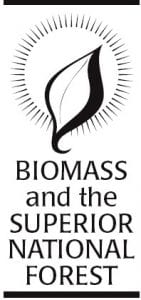Just over a century ago, timber harvesting was one of our nation’s biggest industries. Wood was a major component in American homes, used for everything from foundations and siding to roofing. Everyday household items from file cabinets and horse-drawn wagons to wash buckets were made of wood.
The concept of harvesting wood with the future health of the forest in mind was not commonly embraced, however, and the possibility of a “timber famine” became a growing concern by the late 1800s.
In an October 2009 speech, U.S. Forest Service Chief Tom Tidwell addressed the Society of American Foresters. “In January 1905, people gathered in Washington, D.C., for the first American Forest Congress,” he said. “President Theodore Roosevelt addressed the Congress, and he spoke of forests in trouble. …In 1905, America had lost 168 million acres of forestland in the previous 50 years alone. Entire landscapes, entire regions had been stripped of their once lush forests. But the generations that followed, generations of foresters and conservationists, rose to the challenge.” The Sierra Club was founded in 1892 and 13 years later, the U.S. Forest Service was established.
National forests now comprise 8.5% of this nation’s land and the U.S. Forest Service employs 30,000 people yearround.
The U.S. Forest Service mission
The Forest Service website, which calls the agency “the largest forestry research organization in the world,” describes its mandate to protect federal forests while utilizing their natural resources: “Congress established the Forest Service in 1905 to provide quality water and timber for the Nation’s benefit. Over the years, the public has expanded the list of what they want from national forests and grasslands. Congress responded by directing the Forest Service to manage national forests for additional multiple uses and benefits and for the sustained yield of renewable resources such as water, forage, wildlife, wood, and recreation. … Multiple use means managing resources under the best combination of uses to benefit the American people while ensuring the productivity of the land and protecting the quality of the environment.”
Opposition to biomass harvesting
Utilizing natural resources from the Superior National Forest to produce local heat and energy could present new opportunities for local industry, but not everyone agrees that harvesting woody biomass is a good thing.
According to the 2007 USFS Woody Biomass Utilization Desk Guide, “An ecologically and economically sustainable woody biomass harvest and utilization will result in more diverse forest, woodland, and rangeland ecosystems—characterized by native flora and fauna, healthy watersheds, better air quality, improved scenic qualities, resilience to natural disturbances, and reduced wildfire threats to communities—and provide an alternative residue management strategy contributing to rural economic vitality and national energy security.”
Some organizations, however, oppose harvesting biomass from federal forests. The National Resources Defense Council (NRDC) applauded the 2007 Energy Independence and Security Act because it would “keep our federal forests, held in the public trust, from being converted to biofuels farms.”
An April 2008 article by NRDC called Putting Biofuels on the Right Track: Renewable Fuels Standard safeguards protect wildlife and the environment takes a stand against “mining” federal forests for biofuel. “Proposals to use ‘thinnings’ from national forests do not make economic or ecologic sense,” the article states. Such harvesting could “come at the expense of degraded forests and would establish an unsustainable industrial demand for continued commercial exploitation of public resources,” the document states. The NRDC does support removal of wildfire fuel from the immediate vicinity of inhabited areas, however.
The Sierra Club closely follows decisions on management of federal forests. “The Sierra Club supports halting the destruction of forest ecosystems throughout the United States,” its conservation policy states. “We oppose all logging activities – whether on federal, state, provincial, or private lands – that are environmentally unsustainable or that jeopardize fully functioning forest ecosystems. We support the immediate halt of all logging in remaining old-growth or roadless areas, ecologically destructive clear cutting, and conversions to non-native species.”
Does everyone agree on what “environmentally unsustainable” or “fully functioning forest ecosystems” mean, however? Sierra Club policy states that the organization “supports restoring naturally self-sustaining networks of wild forests for every forest ecosystem. … Timber harvest, on the public forests where it is appropriate, shall ensure reforestation and restocking with a species composition that approximates the natural vegetation of the area. Selection cutting systems shall be used, unless the biological requirements dictate otherwise.”
USFS calls for collaboration
According to Forest Service Chief Tom Tidwell, “…The debate about the future of our forests and about forest policy has long been highly polarized. For too long, we have ascribed to each other nefarious motives, trying to change each other’s values, never realizing how corrosive that can be – how futile and counterproductive."
Tidwell believes groups that have stood in opposition “can work toward a shared vision based on healthy, flourishing ecosystems – ecosystems that can provide all the services that Americans want and need while creating jobs and local economic opportunities, supporting communities of all kinds. …It’s about finding common ground in pursuit of a common goal."
Environmental groups might not agree with Tidwell’s idea of forest stewardship, since his vision includes more than “naturally self-sustaining” forests. “Let me be clear,” he said. “We do not mean a mythical golden age of pristine nature. Restoration is based on the understanding that forests are dynamic. For thousands of years, forests have been changing due to a combination of natural and human effects.”
Tidwell quoted Forest Service founder Gifford Pinchot in defining the word conservation: “The foresighted utilization, preservation, and/ or renewal of forests, waters, lands, and minerals, for the greatest good of the greatest number for the longest time.”
This is the third in a series of articles on issues related to utilizing biomass from the Superior National Forest as a source of local renewable energy and its potential to benefit the economy of Cook County.



Loading Comments